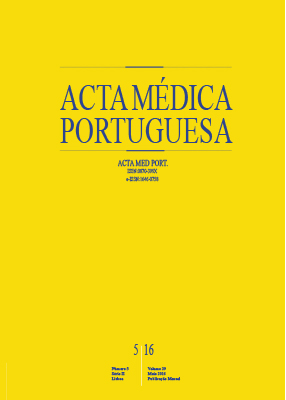Attachment Strategies and Neuroendocrine Biomarkers in Obese Children
DOI:
https://doi.org/10.20344/amp.6826Keywords:
Child, Hypothalamo-Hypophyseal System, Object Attachment, Pediatric Obesity, Pituitary-Adrenal System, Stress, Psychological, Thyrotropin.Abstract
Introduction: Quality of the parent-infant relationship influences the mechanisms of development of the child’s physiological stress regulation. This study explored associations between attachment strategies and both cortisol and thyroid stimulating hormone, hypothesized to be respectively a potential mediator and a potential intervening variable of the mother-child relationship in obese children.
Material and Methods: A sample of 83 obese children (46 boys), aged 10.9 (1.8) years was recruited from a child obesity clinic. Obesity was defined by body mass index percentile adjusted for age and sex. Metabolic biomarkers were measured by routine methods. Attachment strategies were assessed with self and parent-report questionnaires. Family functioning was assessed with parent-reported questionnaires (FACES-III). Multivariate linear regression analyses were performed.
Results: Type A, avoidant attachment strategies, had significant positive association with thyroid stimulating hormone levels and negative association with cortisol levels (R2 = 0.352). Type B, secure attachment strategies, had significant positive associations with both hypothyroidism and body mass index percentile (R2 = 0.541). “Insecure attachment” (types A and C combined) strategies showed some evidence of positive association with thyroid stimulating hormone (R2 = 0.250).
Discussion: These findings suggest that there may be commonalities in the regulation of hypothalamic-pituitary-adrenal and hypothalamic-pituitary-thyroid axes. Processes involved in development of the type A attachment strategy appear to be associated with effects on the regulatory mechanisms of the hypothalamic-pituitary-adrenal axis.
Conclusions: In obese children, different attachment strategies are associated with diverse metabolic profiles. How this may contribute to developing differentiated treatment approaches remains to be explored.
Downloads
Downloads
Published
How to Cite
Issue
Section
License
All the articles published in the AMP are open access and comply with the requirements of funding agencies or academic institutions. The AMP is governed by the terms of the Creative Commons ‘Attribution – Non-Commercial Use - (CC-BY-NC)’ license, regarding the use by third parties.
It is the author’s responsibility to obtain approval for the reproduction of figures, tables, etc. from other publications.
Upon acceptance of an article for publication, the authors will be asked to complete the ICMJE “Copyright Liability and Copyright Sharing Statement “(http://www.actamedicaportuguesa.com/info/AMP-NormasPublicacao.pdf) and the “Declaration of Potential Conflicts of Interest” (http:// www.icmje.org/conflicts-of-interest). An e-mail will be sent to the corresponding author to acknowledge receipt of the manuscript.
After publication, the authors are authorised to make their articles available in repositories of their institutions of origin, as long as they always mention where they were published and according to the Creative Commons license.









